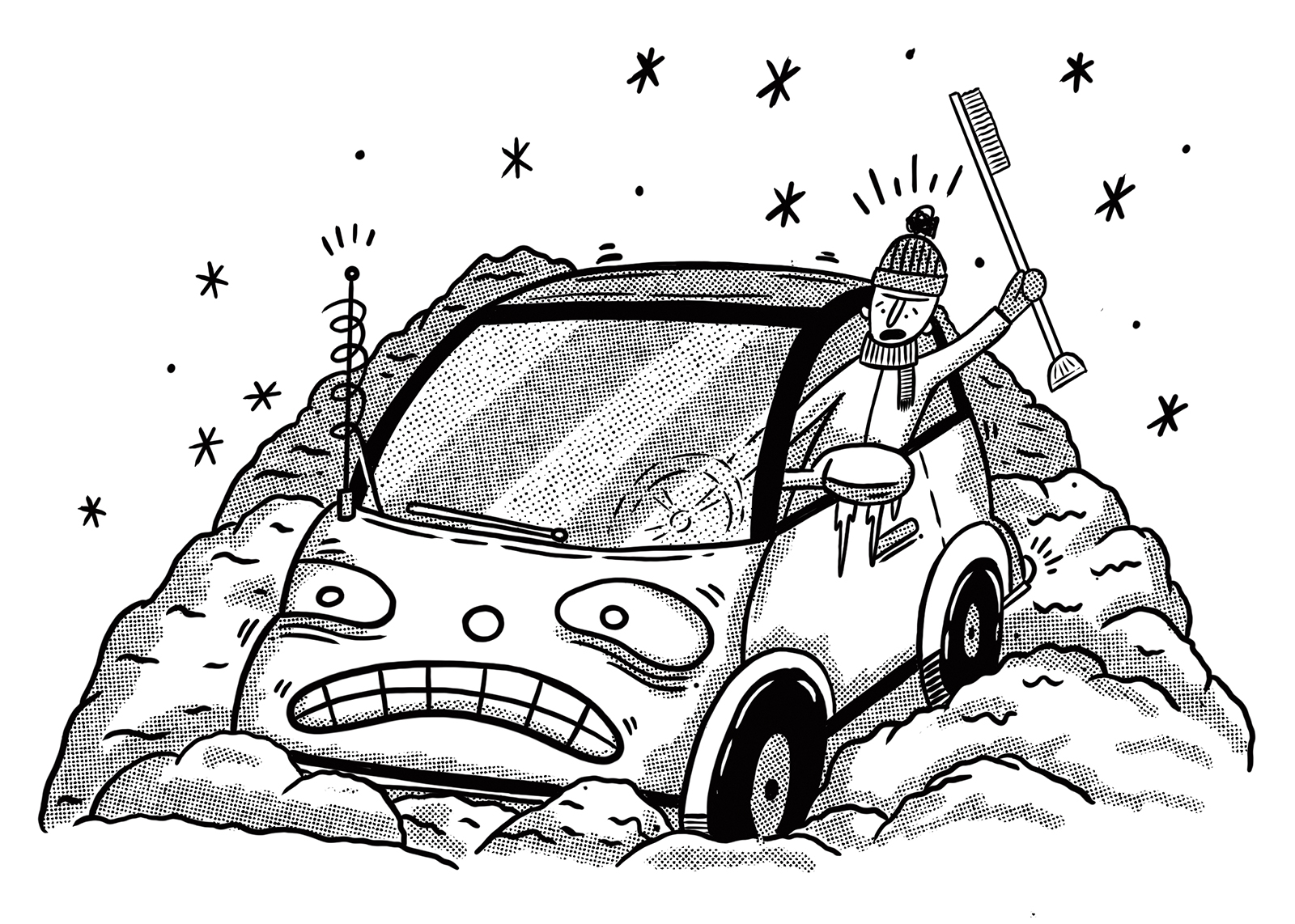Clean the Screen!
Look, if we need to tell you that you should keep an ice scraper and brush in your car at all times, you need a Winter Driving 101 beginner-level class. We all know that we need to keep our windshields and windows clear of ice and snow, right?
But have you cleaned the inside of your windshield? Dr. Kirsten North, health policy consultant for the Canadian Association of Optometrists, says many people need to wipe their windshields from the inside. Why? Well you know that foggy film that builds up on the inside of the windshield? That comes from grime that’s blown in from the defroster.
You’ll notice that film when the sun beats against the windshield. So, make sure to wipe down the inside of the windshield on a regular basis.
Winter Cycling
According to Jeff Jones, sales manager at Mud, Sweat and Gears, the popularity of winter bikes and cold-weather biking gear continues to rise.
He says that for as little as $1,600 (plus the cost of studded tires, purchased separately), a rider can buy a fatbike with four-to-five-inch wide studded tires that “float over the snow.” Now, these bikes handle really easily in the winter, but in the summer the added weight can be heavy on a rider’s legs. Higher priced models come with electric assist; you build up the charge as you ride — you can also use it to charge your phone — and, when you need some help, the bike can give you a bit of a break.
But, what to wear when you’re riding in the winter? Cyclists can fall into the same trap that cross-country skiers do; they bundle up, then, when they start to work out, they overheat. Then, they get all sweaty and sticky under their way-too-heavy coats. “Layering is the key,” says Jones. “And never wear cotton. It simply traps water. It’s the worst thing you can wear.” Instead, look for merino wool, which breathes and keeps you warm.
Now, for the handlebars. You can buy a pair of bar mitts, which attach to the bars. When they’re zipped on, it looks like your handlebars have grown a pair of waterproof sleeves. You slide your hands in and grab the bars. The mitts shield you from wind and moisture as you ride.
This article appears in the October 2018 issue of Avenue Edmonton
